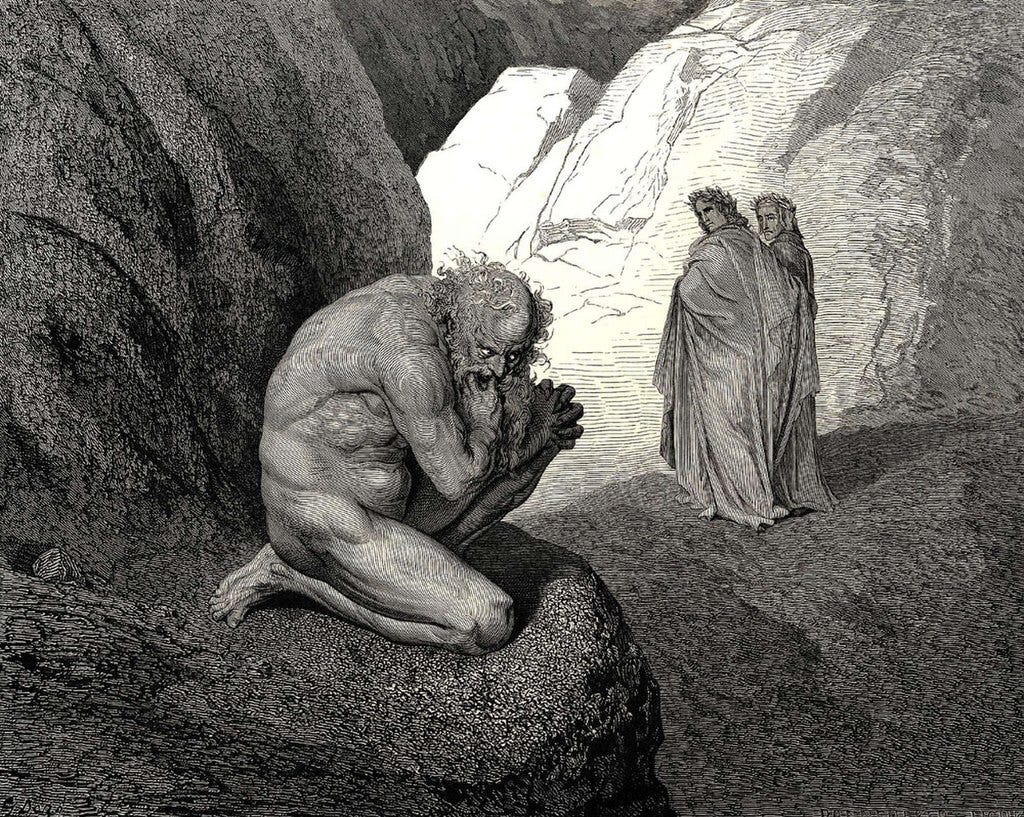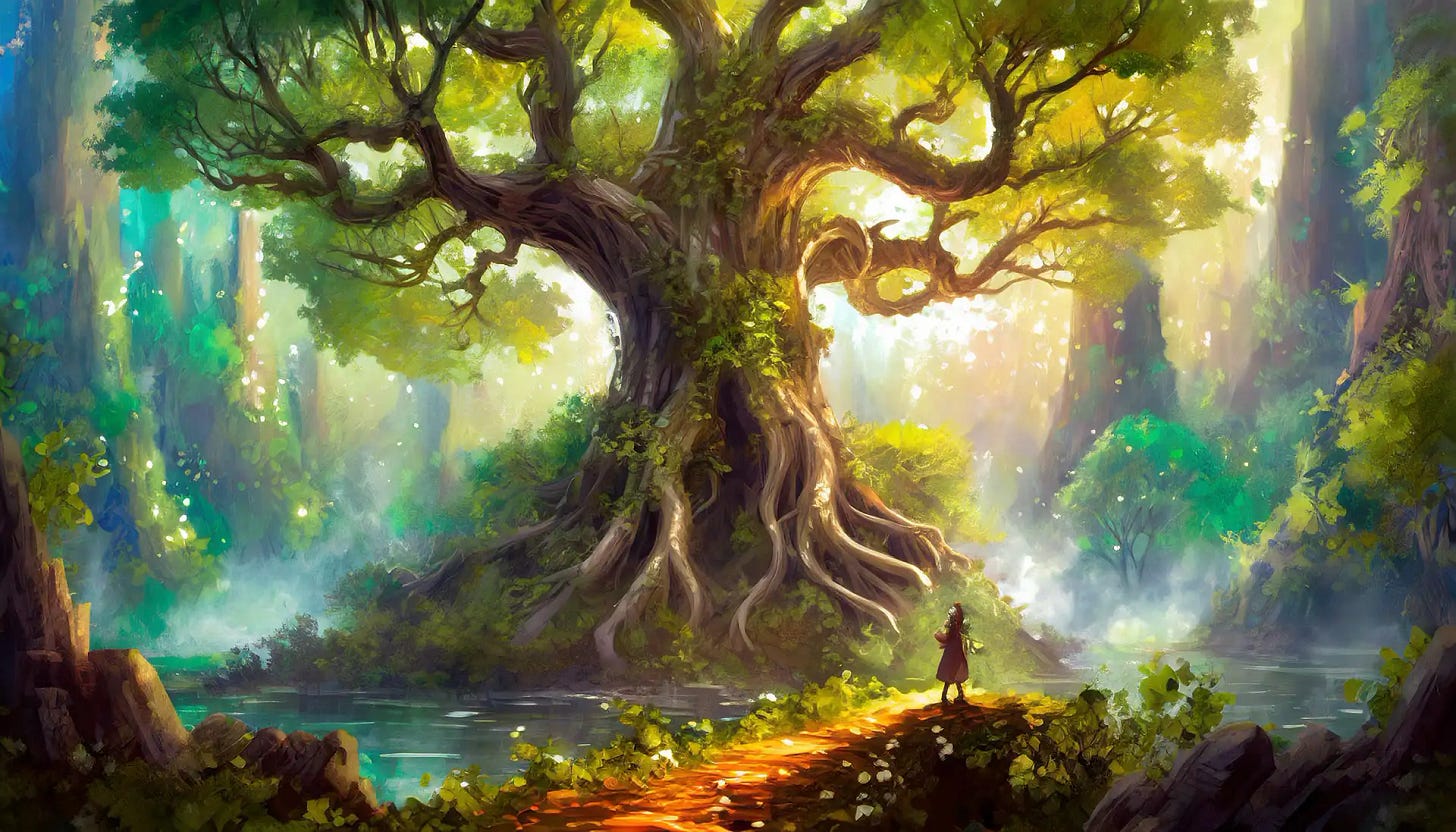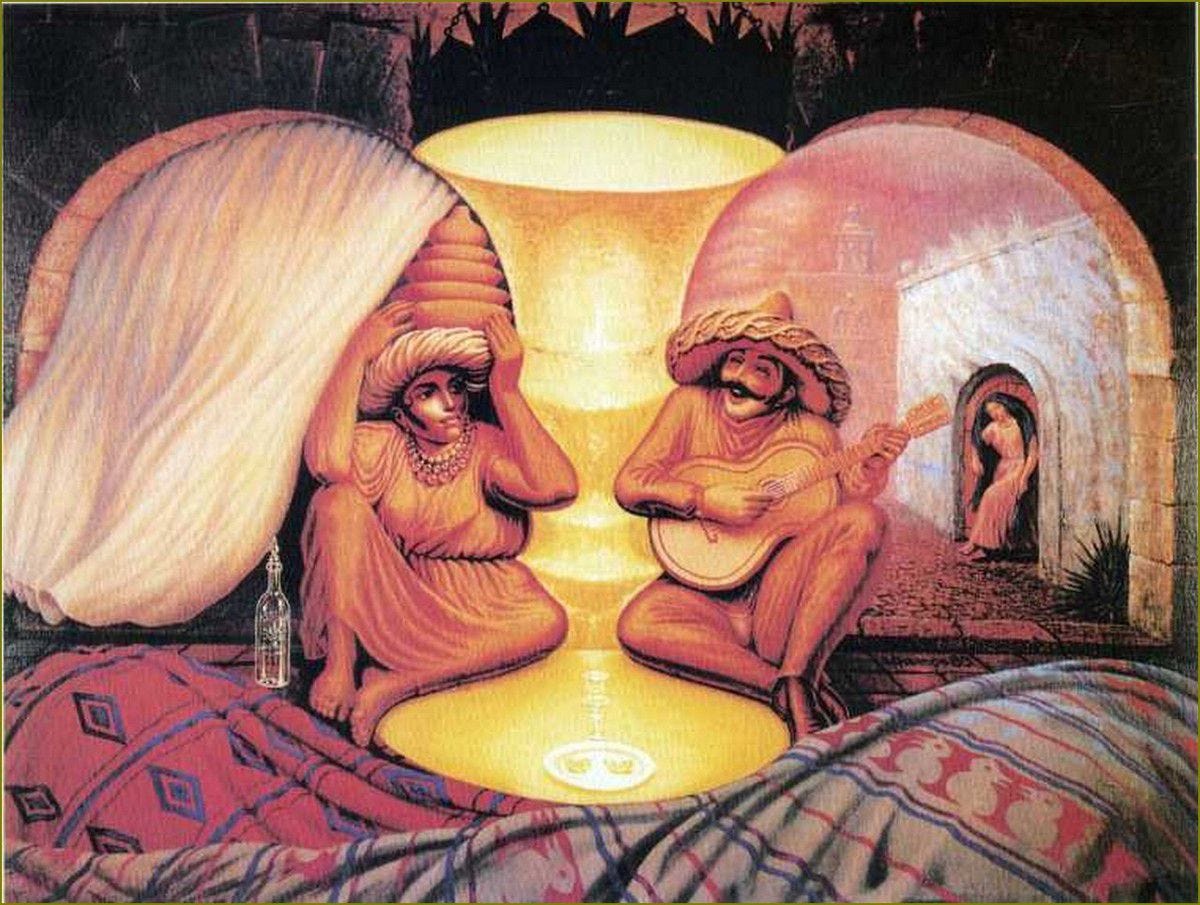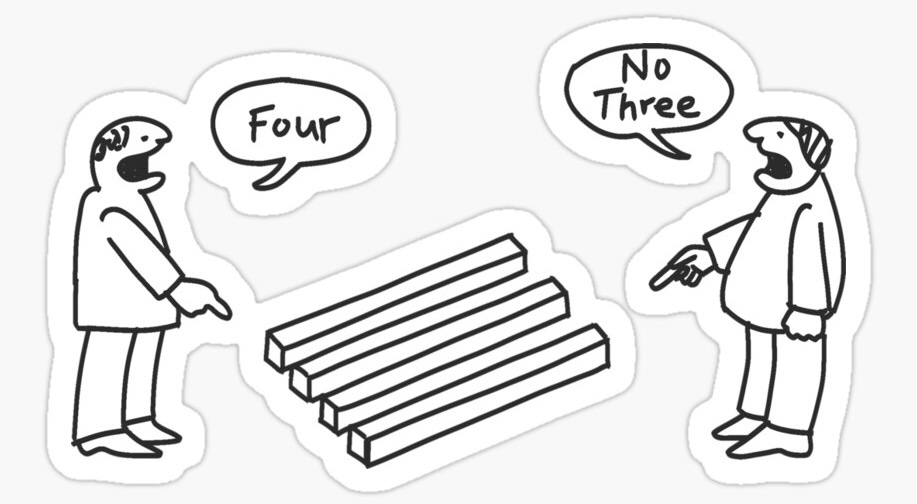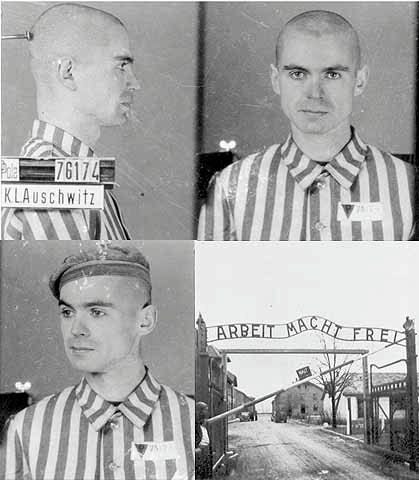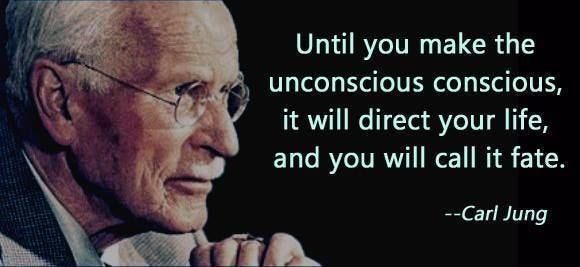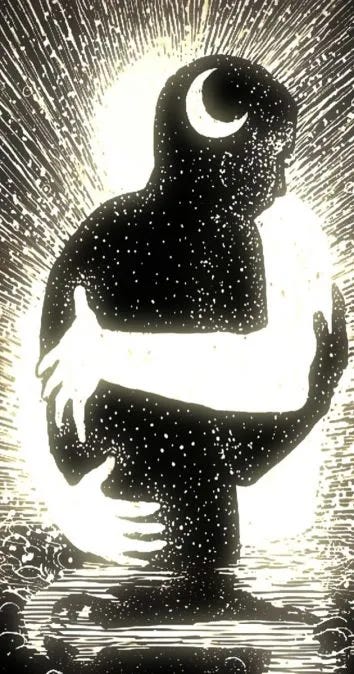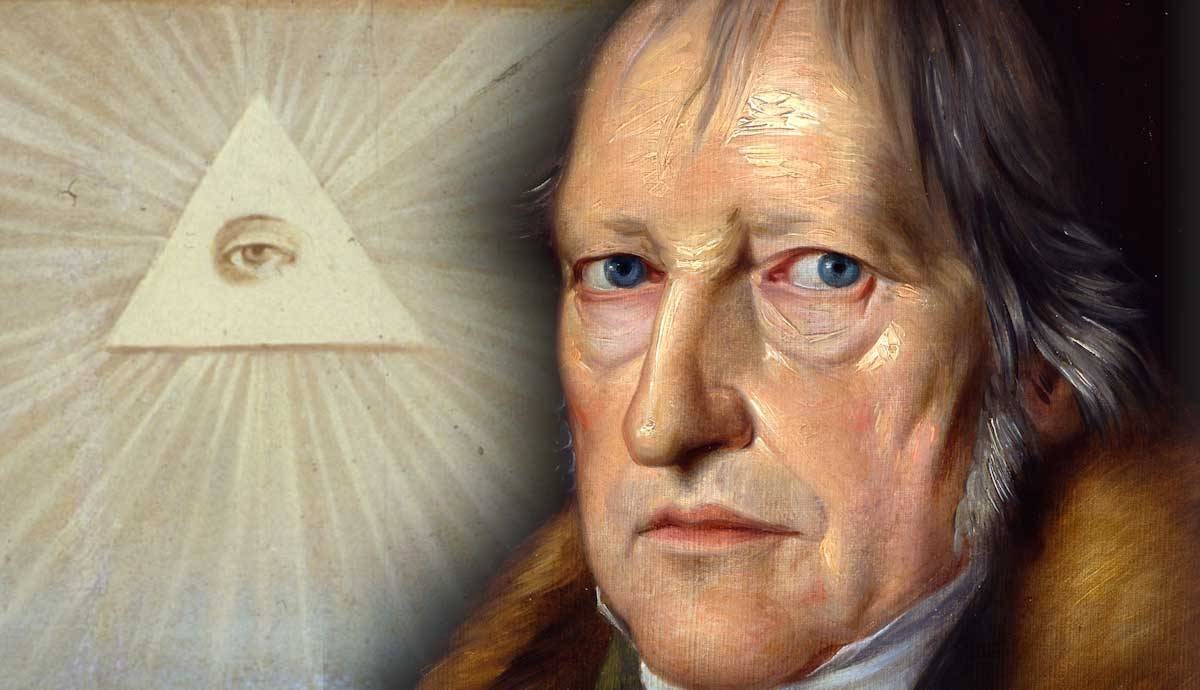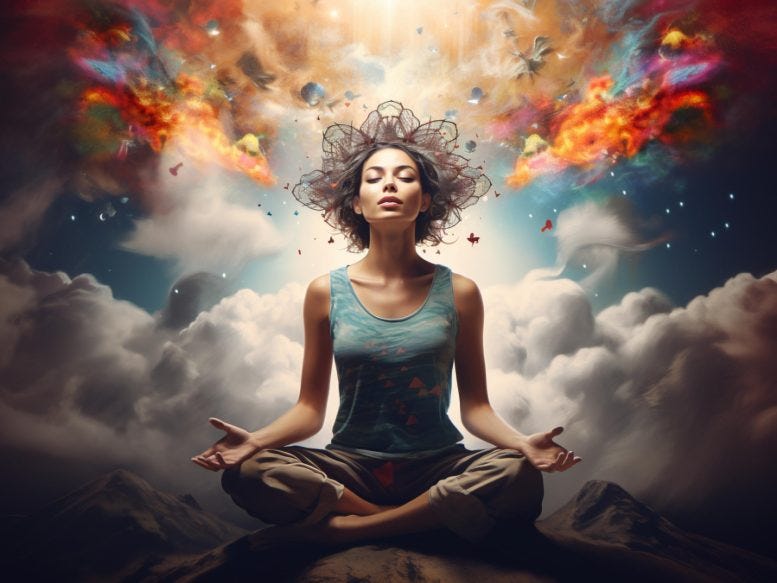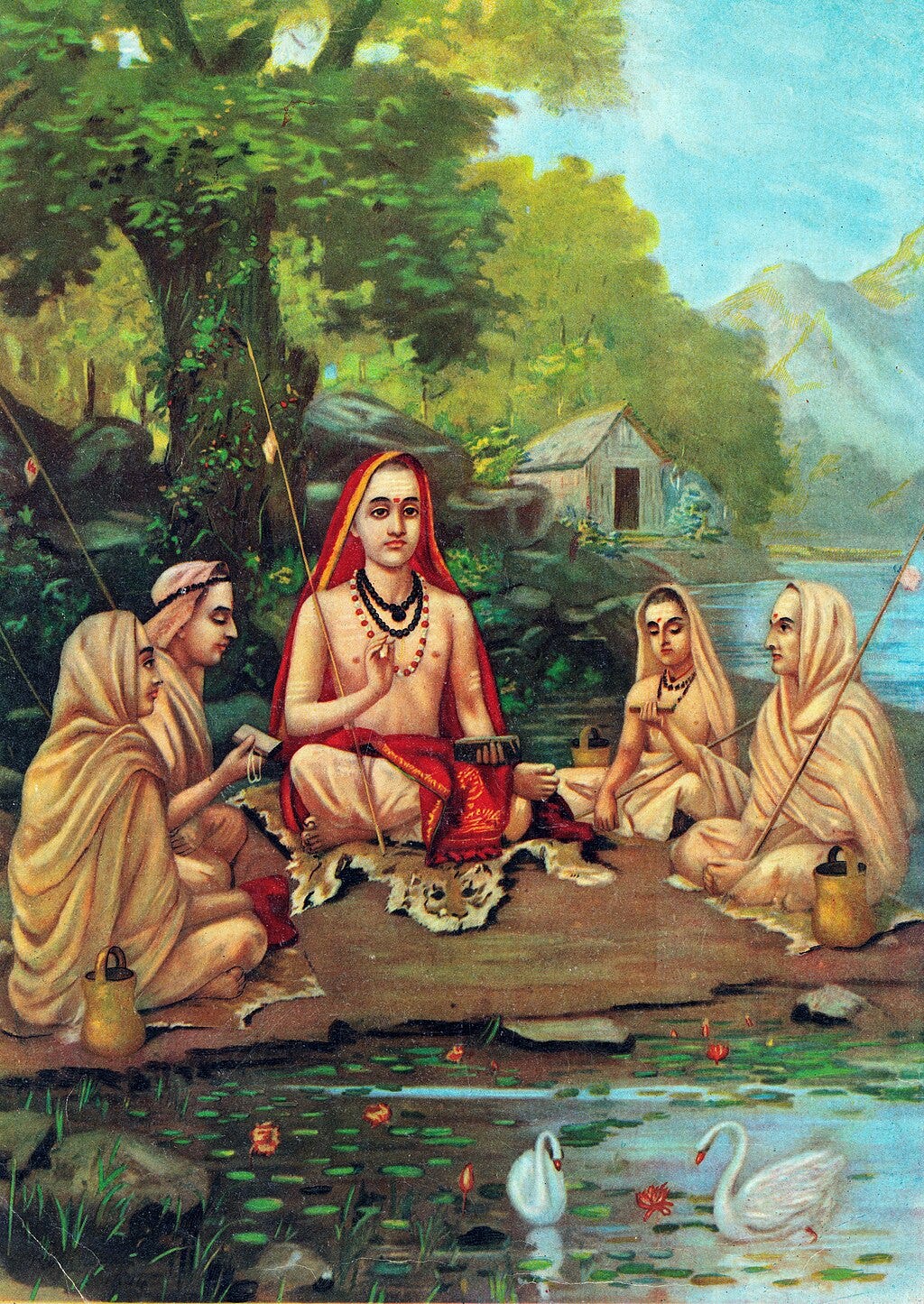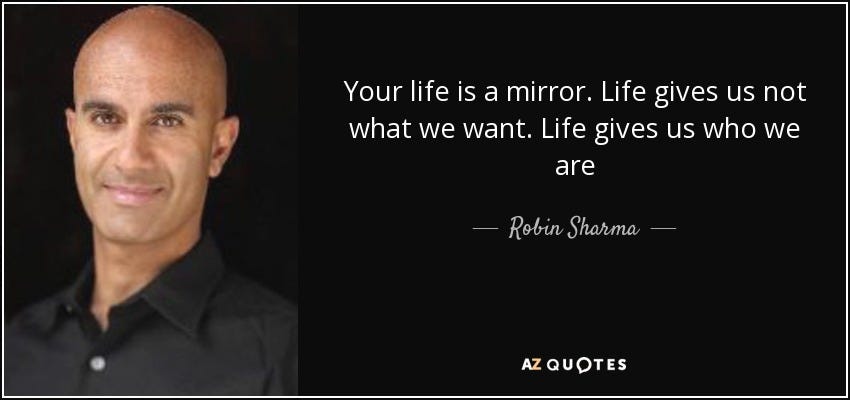
Imagine waking up each day and facing not only your own death but also the deaths of everyone you know.
And now imagine that death was the easy way out.
You had to live through hell on earth, and in this hell, there was an extreme amount of suffering as you were constantly mocked, harassed, starved, worked to the bone, and tortured. Every day you saw suffering, disease, and random executions.
Your mother, father, brother, and wife are all killed.
This was the Life that Viktor Frankl lived as a captive in the Nazi concentration camps.
In and through this suffering, through confronting death and what it meant that Viktor Frankl found transcendent meaning. It was this greater meaning that gave him a reason to live, a way to survive in Auschwitz.
Our fear of death can be so strong that we ignore it instead of facing it like Viktor Frankl did and even if we ignore its significance and set out to achieve all of our goals instead, like Robin Williams did, it won’t ever be enough.
Why is that?
How is it possible that one man, living in a concentration camp can find transcendent meaning, while another man who is adored by millions, is at the hight of his career, has a beautiful family and everything one could wish for, can not find meaning in his life?
The answer lies in Mans Fundamental Problem.
(For a deep dive into this, please read Part 1: Exploring the Human Condition: Our Crisis of Meaning & Why we Suffer)
Man's Fundamental Problem
Our fear of death is so strong that we ignore it instead of unpacking it and the fundamental belief that is at the core of this fear and all subsequent fears.
What is this belief?
At the core, we believe that ‘We are Separate.’
We believe that we are completely separate, independent, temporary individuals who are here, but for a moment.
Since we are no longer one with or a part of a greater reality, then death is perceived as permanent annihilation.
Our lives become precious, and the outside world becomes a threat.
Fear and anxiety are then embedded in every situation, and in every relationship, there exists the potential risk for harm either symbolically or even physically.
Ultimately, this means that we are alone.
We are alone with ourselves. In the end, all we will ever have is ourselves. This feeling of being alone and separate is isolating and produces the isolation we are experiencing.
We need to get close to others, but not too close, for they might hurt us.
We believe all of this because things appear this way, and then our culture compounds this belief through materialism and physicalism.
Physicalism is the view that everything is made of matter, which means that ultimately, the only thing that will survive the test of time, the only thing that actually matters, is… matter!
Not only are we alone, but we are living a meaningless life of suffering and empty pleasures, apparently for no reason at all. We are cut off from the divine and the transcendent.
With this, the belief is cemented that we are separate physical beings having a human experience that is all but a dream.
And this is the nail in the coffin.
We are now bounded to live a contradiction, on one hand our life is meaningless and on the other hand, it’s all we have and we must protect it against the inevitability of death.
But is the core beliefs in being separate even true?
Revelations
An Unexamined Life is Not Worth Living
To discover the truth about our predicament, we have to be willing to peel the union.
We have to buck our society’s values, ideologies and prescription and look and decide for ourselves. We have to become our own self, stand on our own two feet, instead of leaning on society.
This takes courage and puts you in the odd position of going outside of your society, outside of your group think and to explore for oneself.
Below, I have started peeling the union and you can jump in but I have to warn you that doing so produces tears. You will have to go into the unknown and feel it.
We will go layer by layer deeper into the matter until we hit rock bottom, a truth that goes beyond the relative and touches the absolute.
But I only know one way of doing this, and this is to throw you in the deep end. The deepest of ends, and some of you might not be ready because it takes a leap of faith to go into the unknown.
Let’s begin…
1. Are You Independent?
It appears we are separate and independent, but are we really?
You depend on the oxygen you breathe, the food you eat, and the water you drink. In this way, you are deeply connected with the earth and your environment. You and your environment are part of one system.
But you do not live just physically, you also have an inner world. In fact, we spend more time in our inner World, experiencing our thoughts and feelings, then experiencing our bodies and our outer World.
Our inner World and our mind thinks in a language, a language that was given to us. It’s not ours and neither are the majority of our ideas, beliefs and values. We inherited them in our culture.
How we actually see the World is influenced by our culture. For example, Eskimos have 80+ words for ‘white’. They have more experiences of white and different types of snow, and all of these words and experiences don’t exists for the rest of us. And here language plays a key role, because words and language can shape, define, and create experiences.
In fact, language and our beliefs are so powerful that they can take precedence over our actual lived experience.
They easily hypnotize us into believing things about the World that are not true, simply through the nature of language itself.
For example, we believe we experience ‘time’.
But do you actually experience time?
Unless you can go back or forward in time, you don’t experience time at all. What you are actually experiencing is the present moment, and in this moment, you experience both your imagination and change. You project yourself in the past or future, but you never ever leave the present moment.
Clearly we are a part of this World physically, and we depend on it.
Mentally, it goes even deeper as our language, culture, and ideology are deeply embedded in us. They help us perceive and make sense of the World and give it meaning. They literally help shape and define the meaning of our experiences.
So in now way are we truly separated or even independent. Instead we are dependent and fully intertwined with our World.
2. Do you see the World as it is?
One of the things that we believe culturally is that the World is a set of facts, that these facts present themselves to us, and that we then make sense of the World according to the facts.
But that is not at all what happens.
First, there are way too many facts. There are an infinite number of facts, and so we focus our attention on what we value and we do this a-priori.
Based on our values and beliefs, we filter our environment. When we are kids, we notice other little kids we can play with. When we are looking for a partner, we pay special attention to beautiful people we might be interested in.
In every moment we are paying attention to the things that are important and matter to us at the exclusion of everything else. Right now, you are reading this word to the exclusion of paying attention to other things in your environment and everything else that you could be doing in life.
In this way, we live in a World of the meaning of values.
We automatically arrange Life so we see it according to these sets of facts, values, and meanings.
Different ideologies have a different set of facts, values and meanings that they use to make sense of the world. People born over there, see the World according to their ideologies and the same World appears differently to different people.
So we don’t see the World as it is; we see it frame by frame, through our values, beliefs, culture, perspective and make sense of it via our language.
One of the easiest ways to experience these differences is by living in a foreign country for a few month.
3. What do you Really Know?
What do you KNOW with a 100% Confidence?
This entire experience is happening 100% inside your brain.
You have no actual direct access to external reality; all you have is the experience of your perceptions.
Most of what we claim to know are just beliefs. Even things we take as facts, which is the majority of information, we take it all on faith.
This is why science never makes claims on the nature of reality; it makes no claims on what it is. Instead, it only makes predictions.
We can’t really say we know anything about the external World because all we know is the phenomena that happens in our consciousness.
And even if this Life was nothing but a dream, is there anything that would still be true about it?
Is there anything you know to be so, with 100% confidence?
What do we really know?
‘Cogito, ergo sum’ René Descartes
This was the question that Rene Descartes tried to answer and the answer he came up with was the famous “‘Cogito, ergo sum” which is often translated as “I think therefore I am”.
The word ‘Cogito’ refers to more then just thinking. It includes doubting, knowing, and even being. According to Descartes all we can be sure of is of our own existence.
In future months we will fully explore this questions, do a deep dive into perception, mean making and what we know to exist with 100% certainty.
4. Your Experience of the World
This experience you are having is complete, total, and whole.
The experience isn’t cut up or divided into smaller pieces; it can’t be reduced to its parts or reproduced. Every experience is complete, fully integrated, non-dual, and one of a kind.
Experience happens in your awareness and contains the subjective 'me,’ the objective ‘world,’ and the entire relationship between the two.
The objective world you experience is experienced in you, and you are the one that gives it meaning.
This means that your project on your experience is the relationship you have with your World.
Whatever you believe to be true about the World, the relationship you have with reality, is a mirror of you deepest beliefs.
This is clearly so, because in actuality we don’t know anything about the external reality other than our experience and so if you believe something is true about the World, which includes you, then that is also true about you.
The relationship you have with your World is a mirror of your beliefs, your identity, and ultimately, the relationship you have with yourself.
In this way, you don’t see the World as it is. You see the World as you are.
Life as a Relationship
Realizing that your World is a reflection of your relationship with Life, you and your World aren’t separate.
The World is not a set of problems that needs a solution; it's a relationship of meaning.
You take the World to mean something according to your beliefs, perceptions, and identity.
As such, the World you know is actually your World.
The goal isn’t for the World to become utopian or solve all of its problems. Believing that this is possible is believing that there is a perfect solution to Life itself.
But a perfect solution is impossible when something is ever-changing.
And this is great news.
This means that there is no perfect way to be and no ideal shape, which gives you the freedom to take any shape you want and experience what that is like.
Life is an ever-evolving and changing experience, and the best way to handle this is to flow with it, but that, too, is your choice.
Takeaways
You are like a drop of water that helps make the ocean.
Your experience and your World are deeply connected and part of one experience.
You and the world are inseparable, interwoven in the same way that the ocean encompasses every drop, and each drop embodies the essence of the ocean.
By transforming your relationship with your World, you can transform your World.
Road to Redemption
How can we come to know and experience Life in a fundamentally new way?
We have answers in Psychology, Philosophy, and the Eastern Traditions. Below, we will explore a few of these methods and integrate them into a framework that can serve as our guide.
Søren Kierkegaard
Kierkegaard, often considered the father of existentialism, posited that alienation and existential dread often result from failing to align one's actions with one's ‘true self’ or "spirit."
This happens because we blindly follow the prescription of our society, religion, and ideology of the day without investigating the nature of our existential predicament.
“The world is absurd and you must live in it” Søren Kierkegaard
Our society is deeply uncomfortable with death, existential questions, and the absurdity of Life. Even having such conversations is often seen as impolite, morbid, and frowned upon. When we ask about death, at best, we are given a few canned answers and told to focus on our life projects.
Instead of confronting Life’s absurdity and discovering our own reason for being, we believe what our society believes, we value what it values, and we follow the path that it designed for us.
“The greatest hazard of all, losing one’s self, can occur very quietly in the world, as if it were nothing at all. No other loss can occur so quietly; any other loss - an arm, a leg, five dollars, a wife, etc. - is sure to be noticed.” Søren Kierkegaard
The real failure here is in not confronting Life's absurdity, the existential truths about oneself and relation to Life and the divine. This failure will lead to living an absurd life, a life that has an undercurrent of fear, dread and alienation.
For Kierkegaard, the answer is in “taking a leap of faith” by exploring our inner world and potentiality and " finding the idea for which I'm to live and die.”
Here, this idea is bigger than just the self; it goes beyond little ole me and relates to the whole.
As Kierkegaard writes, this part of our subjectivity is “related to God.” We can try to discover for ourselves what is real, what is valuable, what is important, and how to live in the world.
“Life isn't a problem to be solved but a reality to be experienced” Søren Kierkegaard.
To live an authentic life as a ‘true self,’ one has to make a choice and bring the world of infinite possibility into finite being.
“You have to take the ultimate leap of faith and choose the person you're going to be.” Søren Kierkegaard
Through this choice, you are choosing the relationship you want to have with Life. According to Kierkegaard, that ultimate relationship is Faith. This is faith in the divine, transcendent God best expressed in the spirit of Love.
In other words, your ultimate state of being and relationship with Life is a state of Faith in Love itself.
Viktor Frankl
During his imprisonment in Auschwitz, Frankl observed two types of prisoners: those who lost all hope and quickly succumbed to the camp's horrors and those who, against all odds, found meaning and hope, markedly increasing their chances of survival.
This observation led Frankl to a crucial insight: the primary human drive is not Freud's "will to pleasure" or Adler's "will to power" but a "will to meaning."
“He who has a ‘why’ for which to live can bear with almost any ‘how.’"— Friedrich Nietzsche
The will to meaning is the desire to make meaning of our situations and to fulfill our purpose.
This situation is both the situation at this very moment and the overall situation of our life.
In the macro, the big picture of our Life, we have to make sense of our existential dilemma, our reason for being, despite impending suffering and death.
We have to know what we are living for.
What is your Purpose?
For Viktor, he envisioned himself lecturing about his experiences, using his suffering as a tool for teaching and healing.
“Suffering Ceases to be Suffering the Moment it Finds Meaning” Viktor Frankl
Meaning in Suffering
There is a fundamental difference between pain and suffering. Pain is physical, and suffering is mental. We experience pain in our bodies, while suffering happens in our minds.
We suffer when we have not been able to process and make sense of why we experience pain and distress. Then, they enter a cycle of suffering, where similar situations trigger more suffering.
To end our suffering, we need to process our situation and realize why we are suffering, what the suffering has to teach us about ourselves, and what it means. Then, suffering itself becomes the catalyst for our growth.
And this is how suffering can be a great teacher.
Suffering is the only thing in the world that we can not lie to ourselves about. Whether we lie or not, we still suffer, and this is the grace of suffering.
Suffering shows areas of pain we can not ignore and need to address.
Essentially, we suffer until we realize that we no longer have to suffer.
This is all in our attitude and relationship with life.
“When we are no longer able to change a situation, we are challenged to change ourselves” Viktor Frankl
Logotherapy: Confronting the Void
Frankl developed Logotherapy to address the existential vacuum—a pervasive sense of meaninglessness that many experience as dread, apathy, boredom, laziness, or a lack of purpose.
We feel and experience these emotions and the inner void because we crave meaning. Logotherapy helps fill this void by focusing on the following:
Creative Values: Engaging in activities beyond oneself to positively impact others.
Experiential Values: Finding meaning through experiences, such as appreciating beauty, truth, and love, particularly in the uniqueness of interpersonal relationships.
Attitudinal Values: Choosing one's attitude toward unavoidable suffering, transforming despair into a challenge to be met with personal dignity and strength.
Now some of this might seem like it overlaps with some of our culture values however here is the key difference.
Happiness, success, and even self-actualization should not to be pursued directly.
We should not make the mistake of believing that we will be happy if we have a great family, wealth, fame, or career success.
No!
These are the byproducts and symbols of success, and we should not confuse the symbols with the actual thing!
Viktor suggests that you Aim at Your Greatest Cause, a purpose that extends beyond yourself, and make this the central theme of your Life. Then, your Life will have ultimate meaning and purpose, and this is the process of self-actualization.
Living this way is a decision on what type of relationship you want to have with Life.
Through your attitude, you choose how to be in the world and how you make meaning in each situation.
Every situation has a gap between what happens and our response.
In this gap lies our freedom to choose our attitude, to assign meaning, and to decide the course of our actions. This freedom is our ultimate power that no one can ever take away.
Our choices matter profoundly even under the most dire circumstances, such as those in a concentration camp. They are weaved into the human fabric and this information impacts the lives of our loved ones, and the broader human experience.
Everything we do matters.
“Everything you have done, you have done forever.” Viktor Frankl
Carl Jung
Much of what we are doing is bringing the unconscious, dark parts of our psyche into the light by inspecting them.
We are doing this by actively investing our thoughts and feelings about death, meaning, purpose and our own suffering. We are reflecting on our relationship with life which includes our relationships with all of the different types of people that we come across. As we address and process our own suffering and relationship with life, we begin to disintegrate the parts of our unconsciousness that have power over us.
Jung calls this process Individuation, and the full goal of Individuation is to become a ‘True Self.’
A True Self is someone who is very self aware, they have integrated all of the different parts of their psyche into whole and have transformed their inner struggle and suffering into peace.
To discover the True Self, one has to go on a Journey.
This journey peels each layer of the union that is both you and not you. Each layer represents different facets of your psyche—some of which are conscious and many that are not. By becoming aware of these layers, processing them, and transforming them, you evolve from a fragmented existence into a unified, conscious being. relationship
Here are the four main parts of the journey:
Part 1: The Shadow
The Shadow includes everything you dislike, ignore, fear, disapprove of, and hate about yourself. This includes weaknesses you neglect and your judgments. You might be using your judgments to push away temptations, and in this way, you are repressing a part of you that is tempted.
The Shadow also includes your fears and areas of life you are uncomfortable exploring. This can consist of violence, dark thoughts, sexual fantasies, and other taboos. We push these away and pretend that they don’t exist, and doing so makes us afraid of what we might be.
Taboos can be powerful because part of the appeal of the taboo is that it is forbidden.
The forbidden has a temptation of its own, and at times, we might be attracted to a taboo just because it is a taboo.
We want to cross the line in an act of rebellion, but there is usually more to it than just rebellion.
In some cases, we might be tempted by the taboo, and in other cases, crossing the line is a way for our self-hatred to manifest itself, as it brings rejection and judgment our way. In this way, our internal rejection of ourselves creates situations where we behave in a way that leads to external rejection.
Projection
When we judge people we barely know negatively, we judge them according to a set of values that we find detestable. In this way, we project our judgments onto them and make them responsible for our negative feelings.
The problem with the world is then 'other people,' and it's out there somewhere. We make the world responsible for the judgments we place on it.
This is called Projection, one of the most common ways the Shadow manifests itself. It projects our thoughts, feelings, and judgments onto other people.
This also happens day to day in benign ways.
For example, we might now be aware of some of our weaknesses. We might also fear being judged negatively and others noting our flaws. When our shortcomings lead to failure, we might do everything possible to avoid taking responsibility and blame others instead.
Projection, failing to take full responsibility, and blaming others are key components of the Shadow.
Confrontation with the Shadow
Shadow work is the first step towards becoming a True Self. By working with our Shadow, we can transform our relationship to our own fears, judgments, traumas, and suffering.
Steps in Shadow Work
Recognition and Acknowledgment
Identify the Shadow: Begin by recognizing the traits, emotions, and impulses that you typically deny or dislike in yourself.
Acknowledge the Existence: Accept that these traits are part of you and formed as a way to help you at one point in your life.
Exploration and Insight
Explore the Origins: Delve into why your shadow traits are there. What is their root cause? How did they come into being? How might they have helped you in the past?
Connect with Emotions: What emotions are associated with these traits? What past hurts or conflicts might have led to these feelings?
Acceptance and Compassion
Accept Your Full Self: Consider how your Shodow might be trying to protect you by cutting you from your dark traits?
Integration and Transformation
Integrate into the Self: Consider what lessons your dark traits have to teach you.
Transform Relationships: Consider how your Shadow is helping you grow now.
Ongoing Reflection and Maintenance
Regular Self-Reflection: Reflect on your progress
Use Creative Outlets: Engage in activities allowing self-expression and reflection, such as journaling, art, or therapy.
Seeking External Support
Professional Guidance: Consider seeking support from a therapist, especially one familiar with Jungian psychology.
Community or Group Support: Sharing experiences with others doing shadow work can provide additional insights and emotional support.
Only after exploring the Shadow and beginning to integrate will you experience life as a relationship.
Part 2: Dialogue with Anima/Animus
Jung identified the anima and animus as the archetypal feminine and masculine aspects present within each of us, regardless of gender.
This is essential because each gender has a preference and a tendency toward the qualities of the “True Self” it is most attracted to. This attraction leads to specialization, and here is how it breaks down:
Male: The masculine tends to be more interested in Freedom and excels in the practices of being the witness, pure awareness, and meditation.
Female: The feminine is more interested in fullness, fulfillment, and love and excels at devotional practices and relationships. Anima is Latin for Soul.
Engaging in a dialogue with these aspects helps balance your masculine and feminine energies, enriching your understanding of yourself and improving your relationships with others.
Part 3: Mana Personality
In the same way that each of us has an Unconscious Part in which the Shadow resides, there is also a Collective Unconsciousness in which the Archetypes reside.
Archetypes are common patterns and ways of being in the world that are ever-present.
“The contents of the collective unconscious are archetypes, primordial images that reflect basic patterns that are common to us all, and which have existed universally since the dawn of time.” Jung
This stage involves working out your relationships. These include your relationships with charismatic people, power, internal and external archetypes, and authorities.
Here are a few examples of common archetypes and what they represent:
The Hero: We are all the heroes of our own stories. The hero’s main feat is to overcome the Monster of Darkness, which is one of life’s challenges. This is ultimately a process of the light of consciousness triumphing over the darkness of the unconscious.
The Persona: The persona represents a person’s social mask.
The Wise Old Man: The wise old man acts as a guide toward our own wisdom.
The Mother: “The mother archetype is the bounty of nature, which gives us our life and all that we need for that life and which is anyone’s legacy by the fact of being alive. The mother archetype is the art of living peaceably with the bounty of nature, which is a pure gift and lies within the ecology of the natural order.” Robert A. Johnson
The Trickster: “He is a forerunner of the savior, and, like him, God, man, and animal at once. He is both subhuman and superhuman, a bestial and divine being, whose chief and most alarming characteristic is his unconsciousness.” Carl Jung
The Father: The Father represents values and what is esteemable and worth pursuing. A positive father complex for sons leads to a reverence for spiritual values. In the daughter, the Father “exerts his influence on the mind or spirit … increasing her intellectuality,” Jung writes.
The Maiden: A woman who personifies innocence and softness.
These are examples of archetypal patterns and relationships we must harmonize. The work here is to realize the relationship, have full acceptance of the 'other,' and overcome our fascination with certain types of people.
This stage concludes when we realize that we are and always have been the ultimate authority because we decide who and what to give authority to.
Here, we take back the authority and take on the full responsibility of being a Self.
Part 4: True Self
The True Self is a state of wholeness and transcendence. It includes and transcends all parts of the Self.
“So what is the Self? It is a center or wholeness that consists not only, like consciousness, of the conscious psyche but of both the conscious and unconscious parts of the psyche together. This Self also comprises what we are but do not know we are.” Carl Jung
The process of becoming a Self is a conscious process where through consciousness you bring you consciousness to your unconscious parts.
“Psychological development in all its phases is a redemptive process. The goal is to redeem by conscious realization, the hidden Self, hidden in unconscious identification with the Ego.” Edward Edinger
Ultimately, on becomes The True Self when their consciousness goes beyond its identification with the Ego. Here the Ego becomes another object in our awareness.
So the True Self is pure awareness; it is consciousness itself, aware of itself, and in this way, it is one’s inner divinity.
One of the ways to go through these stages is by using the Hegelian Dialectic.
Hegelian Dialectic
The Hegelian Dialectic is a robust process of understanding and synthesizing opposing forces for a greater understanding. This can be a practical way of working with the Shadow whenever you encounter challenges in your life.
Here is what you need to know.
First, every force brings its opposite into existence, and through opposition, these opposing forces contend with each other, inform and define each other, and co-evolve.
Each force transforms the other through the dialect process of thesis, antithesis and finally both are merged into synthesis and greater understanding.
You can use the Dialect process to help you realize how the negative forces in your life cast a positive light and how this paradox and contradiction can help you grow.
Meaninglessness & Meaning
Thesis: Life is meaningless, empty, pointless
Antithesis: The will to meaning is the very thing that creates the void, which produces suffering, which moves us to find meaning
Synthesis: Through the void, meaninglessness, and absurdity, we find that meaning has value,
Thesis: We search for meaning externally, believing it exists outside ourselves.
Antithesis: We experience meaning in the beauty of a song, a sunset, or a lover's smile, suggesting that meaning is present in lived experiences.
Synthesis: Upon closer inspection, we discover meaning has been there the entire time. We give everything meaning; even to say something is meaningless is in itself a form of meaning attribution.
Greater Understanding: This leads to a grander understanding that Life doesn’t inherently possess meaning; instead, it's a relationship of meaning where meaning is continuously created and interpreted through our interactions and perceptions.
Suffering & Growth
Thesis: Suffering doesn’t feel good and should be avoided.
Avoiding suffering does not make it go away; sometimes, the more we avoid it, the more we suffer.
Suffering becomes a truth we can not ignore
Antithesis: Suffering has a massive benefit in that it does not allow you to ignore it
Suffering, despite its discomfort, forces individuals to confront underlying issues.
We no longer suffer when we understand the meaning behind our suffering and resolve the root cause.
Synthesis: Suffering is a Great Teacher. Our suffering is the one thing we cannot lie about; through it, we are forced to grow.
You can do this with any areas you struggle with, such as your vices, Shadow, inner contradictions, and paradoxes.
Here is an example with 7 Deadly Sins & 7 Heavenly Virtues:
Lust (excessive sexual appetites) & Chastity (purity)
Gluttony (over-indulgence) & Temperance (self-restraint)
Greed (avarice) & Charity (giving)
Sloth (laziness/idleness) & Diligence (zeal/integrity/Labor)
Wrath (anger) & Forgiveness (composure)
Envy (jealousy) & Kindness (admiration)
Pride (vanity) & Humility (humbleness)
Each force brings the opposite force into our lives. Opposing forces transform each other through the dialectical process of thesis antithesis and finally merge into a synthesis of greater understanding.
Mindfulness, Gestalt Therapy, and Cognitive Behavioral Approaches
You may be wondering, “How do I do all of this?”
And the answer is easier than you might imagine. There are essentially two parts to any practice: Mindfulness and Reflection.
Mindfulness & Gestalt Therapy: Through being present, you can become aware of and process your current feelings. You then address things as they come up. You don’t have to chase your Shadow or dig deep into your past traumas. Instead, you process them at the moment as they come up and later when you reflect on them.
Reflection: Reflection includes looking at the bigger picture, noticing patterns of cognitive distortions (these might consist of black-and-white thinking, overgeneralization, catastrophizing, or personalizing situations), and exploring ways to address these patterns. To address your patterns and the underlying causes, you can use Journaling, Shadow Work, Dialogues and Hegelian Dialectic, Role-Play and Experimentation, and Self-Inquiry.
Both of these approaches are acts of radical honesty.
Self-Inquiry (Advaita Vedanta)
Self Inquiry is a practice of introspection aimed at understanding the fundamental nature of the Self and our reality. It is grounded in our actual experience of life.
Often, this practice is referred to as the direct approach, which goes even deeper than Jung’s psychology. It cuts through our outer layers, such as our personality, values, beliefs, culture, language, perspective, and identity, and goes straight to our core Self.
In the process, it shines and exposes our root assumptions and beliefs about the world and ourselves, which lead us to suffering.
Self-inquiry can lead to a profound recognition of non-duality and the oneness of life.
It uses the ‘neti’ process, which translates to “not this, not this .” To start, you have to throw away everything that something is not until there is nothing else you can throw away. You are then left with the one thing that is essential, its essence.
You can use this to yourself and get to the core of who you are. You can apply this to what you know and get to the heart of what is real.
Below is an example starting with 2 fundamental questions. I will ask questions, provide a hypothesis, and investigate it. If my hypothesis has any problems, then it can not be true, and so we throw it out.
Who Am I?
Hypothesis 1: I am the body
False: Which body? Throughout your life, you have been a baby, a child, a teenager, and so on. Your body is constantly changing. If you are the body, you will be a different person with every change. If you lose your arm tomorrow, will you become a different person?
Hypothesis 2: I am the brain
False: The brain is part of your body, and like the rest of your body, it is going through tremendous change each and every second. Do you become a different person when your brain cells die?
Hypothesis 3: I am my mind, my thoughts, feelings
False: Your thoughts come and go. When your thoughts go, do you go with them? If you are the mind, when the thoughts go, you will go with them.
Hypothesis 4: I am me
False: Who is this me? Is me your self-concept, the person you believe you are based on your experiences, beliefs, and identity? This ‘me’ has changed so many times throughout your life, yet you are still here.
Status: You are not the body, your brain, your mind, or the 'me.' Go on like this until you reveal the answer.
What do I know to be 100% real?
Hypothesis 1: facts about life, history, countries, we know these things to be real,
False: How do you know? The facts we pay attention to and deem important are socially constructed; history is told by the winners, and the lines of countries are drawn differently by different people... All of these things are mental constructions.
Hypothesis 2: what physics, chemistry, and math tell us about the world
False: These are phenomena we observe through our limited senses. We don’t know anything directly about the nature of the external world as it is, and science makes predictions; it does not tell us what things actually are.
Hypothesis 3: I know this sentence is real because I am reading it
False: All of this is an experience and experience that is happening inside your brain. For all you know, this can be a hallucination or a dream. When you are in a dream, don’t you also believe it is real and happening?
An honest investigation has a way of humbling us and revealing how much we actually know. It exposes our beliefs and assumptions.
The point here is the journey to investigate our actual experience. As we go deeply into the nature of our experience in the moment, we can discover an essential truth.
The only way to really get the answer, to fully understand it, is by going on this journey and living the question. Looking up the answer to KOAN is then like reading a foreign language out loud; you might be able to read the answer, but you won't understand the meaning.
Now, see if you can get to answer these two questions.
The Resurrection: Self-Discovery
Our identity and beliefs are projected onto our reality and relationship with life.
We then experience the full force of our beliefs and believe we are right.
However, this all produces a lot of pain and suffering. The suffering points to a more profound truth. It shows us that, in fact, we don’t fully understand our situation, our reason for suffering, and the deeper meaning behind our suffering.
As we go on a path of self-discovery, we begin to see all the ways in which we created our own suffering through our Shadow and ignorance.
When we address our issues on a core level, we begin to see clearly. The veils of illusion are lifted, and we begin to see what life really is for the first time.
It becomes clear that life is a relationship with meaning. Our experiences and external lives are a mirror of our internal lives and who we are.
As we go deeper and deeper, it becomes more and more evident that the difference between inner and outer, world and Self, all happens within our experience. In reality, all we know is experience itself, and experience is non-dual. It is one whole, undivided, non-dual experience.
And now, finally, we turn back our conscious attention to the one that has been looking out the entire time, the SELF.
The Gift: Self Discovery Journal
If you want to go through the process, I created a Self Discover Journey that deeply explores each part of your Identity.
The Self Discovery Journal will guide you through a deep exploration of your via a set of Self Inquiry questions that are aimed at helping you uncover your core.
You can see a free Preview here.
Paid Members can download it for Free below 👇
Keep reading with a 7-day free trial
Subscribe to Stefan Speaks to keep reading this post and get 7 days of free access to the full post archives.



